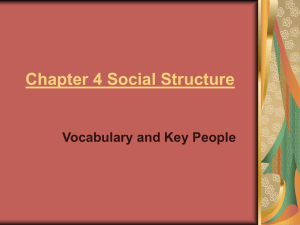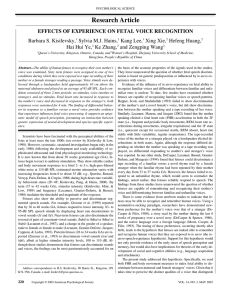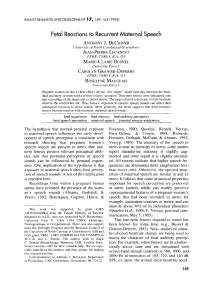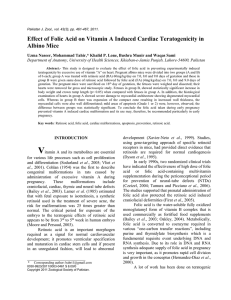Sex, Gender, and Culture Chapter 8
advertisement
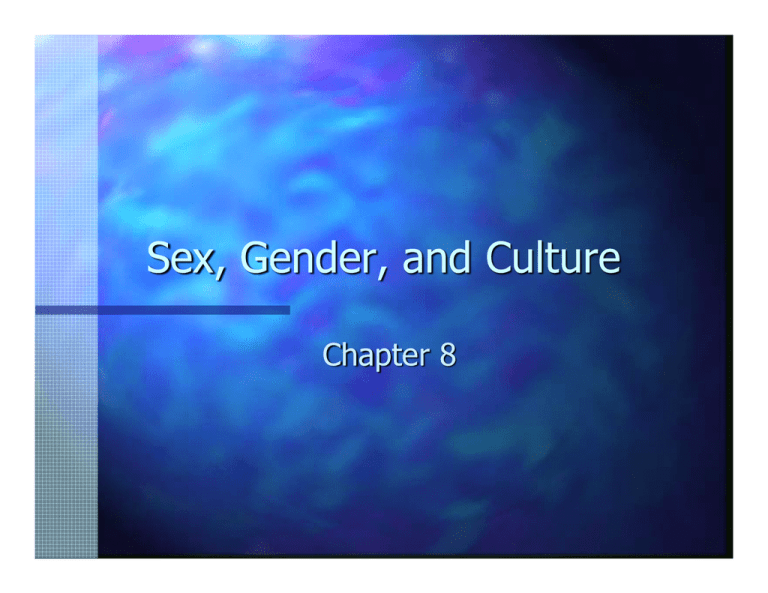
Sex, Gender, and Culture Chapter 8 Gender Gender …the way members of the two sexes are perceived, evaluated, and expected to behave. Gender Differences- (Ember) …differences between females and males that reflect cultural expectations and experiences. (Masculine,feminine) Sex Sexual Dimorphism …refers to the physiological differences between men and women. (Ember)…refers to a species in which males differ markedly from females in size and appearance. Sex differences- …purely biological differences. Gender Roles What are Gender Roles? Do all societies make some distinctions between what men are expected to do and what women are expected to do? Murdock’s Ethnographic Atlas-classifies hunting as an exclusively male activity in over 99% of societies listed- child care is overwhelmingly female activity. Patterns of Division of Labor Review Table 8-1 on page 128 of your text. Primary subsistence activities. Secondary subsistence and household activities. Theories of Gender Role Distribution Strength Theory …an explanation for the gender division of labor suggesting that men’s work typically involves tasks, (like hunting and lumbering) requiring greater strength and greater aerobic work capacity. Compatibility-with-child-care Theory …an explanation for the gender division of labor that suggests that women’s work will typically involve tasks that do not take women far from home for long periods, do not place children in potential danger if they are taken along, or can be stopped and resumed if an infant needs care. Economy-of-effort Theory …suggest that it may be advantageous for a gender to do tasks that follow in a production sequence (e.g., those who cut lumber make wooden objects) it may also be advantageous for one gender to perform tasks that are located near each other (e.g.,childcare and other chores done in or near the home). Expendability Theory …an explanation for the gender division of labor that suggests that men, rather than women, will tend to do the dangerous work in a society because the loss of men is less disadvantageous reproductively than the loss of women. Gender Stratification …the degree of unequal access by the different genders to prestige, authority, power, rights and economic resources. Examples of Gender Stratification... Apartheid of Gender Two-thirds of all the illiterate people in the world today are women. More than 70% of women age 25 and above in Sub-Saharan Africa, southern Asia and western Asia are illiterate. Literacy has risen faster for men than women. Apartheid of Gender: Cont’d The world’s women are concentrated in the lowest-paid occupations/fewer benefits. Women are more likely to work part time/have less seniority, occupy positions with little or no upward mobility. Gender in the United States Paid Labor Force- Men 76%, Women 57% Double work load- Both wage employed and responsible of housework and child care. Occupational segregation Feminization of poverty-More than half of all female-headed families are living below the poverty line. Gender Ideology …a system of thought and values the legitimize gender roles, statuses, and customary behavior. Religion- right/left side, purity/pollution, good/bad, authority/submission. Birth preference-Male gender bias, female infanticide, nutritional deprivation. Example next slide... Extreme Gender Ideology Ramanamma and Bambawale (1990) …for 700 pregnant women applying for prenatal sex determination in a North Indian hospital, 250 fetuses were determined to be male and 450 fetuses were female; all of the male fetuses were kept to term, but 430 of the 450 female fetuses were aborted. Human Sexuality Do societies regulate sexual conduct? Permissive vs restrictive Premarital Sex: Jaminawa United States Human Sexuality Sex Within Marriage: Dani of New Guinea Aranda of Australia United States Thonga of Africa Siriono of South America






